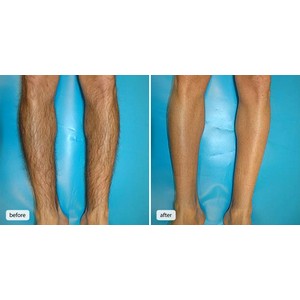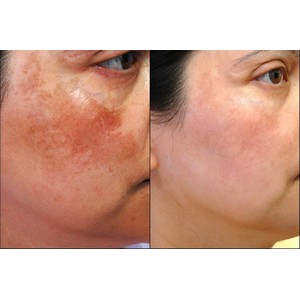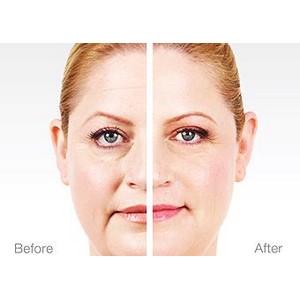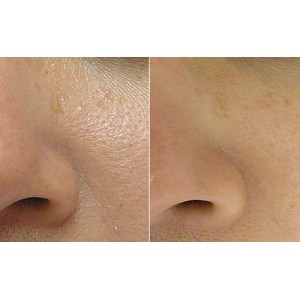Does your high hairline affect your confidence and overall appearance? A hair transplant to lower hairline could be the perfect solution for you!
A hairline-lowering transplant is a cosmetic procedure designed to create a more balanced and aesthetically pleasing forehead. The process involves transferring hair follicles from a donor site, typically from the back side of the head to the frontal hairline. It produces a natural-looking, permanent hairline that complements the individual’s facial features.
 If you are looking for the best hair transplant in Mysore, consult Dr. Manas S N at Reniu Hair Transplant Clinic. He is among the leading hair transplant doctor in Mysore. Dr. Manas has extensive skills in performing forehead hair transplants with precision and care, ensuring outstanding results.
If you are looking for the best hair transplant in Mysore, consult Dr. Manas S N at Reniu Hair Transplant Clinic. He is among the leading hair transplant doctor in Mysore. Dr. Manas has extensive skills in performing forehead hair transplants with precision and care, ensuring outstanding results.
In this blog, we will discuss hairline transplant to lower hairline, their safety, cost, techniques, benefits, and more. Let’s dive in!
Overview of Hairline Transplant
 A low hairline transplant is considered a reliable and effective option for individuals seeking to restore their hairline, improve hair density, and regain confidence. The procedure involves removing hair follicles from one part of the body, usually the back of the head (donor area).
A low hairline transplant is considered a reliable and effective option for individuals seeking to restore their hairline, improve hair density, and regain confidence. The procedure involves removing hair follicles from one part of the body, usually the back of the head (donor area).
Then, transplanting the follicles to the desired area (recipient site). Only qualified hair transplant specialists can perform the procedure safely and accurately. It requires careful planning, artistic skill, and attention to detail to achieve successful and natural-looking results.
Are Hairline Transplants Safe?
Hairline transplants are generally considered safe when performed by certified and experienced hair transplant surgeons. Modern advancements in hair transplantation techniques, such as Follicular Unit Extraction (FUE), have significantly reduced the risks associated with hair transplant procedures.
FUE hairline lowering involves removing hair follicles from the donor area and transplanting them to the recipient area, such as the frontal hairline. It leaves fewer scars, resulting in faster recovery than conventional techniques. However, like any surgical procedure, there are inherent risks involved. To minimize the risks and ensure the best possible outcomes, choosing a reputable clinic and a skilled surgeon with a track record of successful hairline transplants is essential.
“Patients must follow pre and post-operative instructions diligently. It can further enhance the safety and success of the hairline transplant procedure, advises Dr Manas S N.”
Let’s know,
Hairline Surgery Cost
The hairline lowering hair transplant cost can vary depending on several factors. These factors may include the extent of hairline lowering required, the clinic’s location, the experience of the surgeon, and the specific hair transplant technique used. Consult the chosen clinic for an accurate cost estimate of hair transplant to lower hairline tailored to your needs and goals.
New hairline surgery is generally considered an elective cosmetic procedure. Hence, the cost is typically not covered by health insurance. Investing in a hairline transplant is an important consideration. Patients should be cautious of highly low-cost options. They may compromise the patient’s safety, the quality of the procedure and the final results.
Now, let’s look at the,
Different Techniques Used for Hairline Lowering Transplant
Hair transplant to lower hairline can be achieved through various techniques, each tailored to suit the patient’s unique hairline and desired outcome. Here are some of the common methods employed by hair transplant specialists:
1. Traditional Strip Harvesting (FUT):
This procedure involves surgically removing a strip of skin having hair from the back of the head, usually the occipital region. Then, the surgeon dissects the strip into individual hair follicles under a microscope. These follicles are then transplanted to the frontal hairline to create a lower hairline. While effective, this method can leave a linear scar at the donor site, and the recovery period may be longer than other techniques.
2. Follicular Unit Extraction (FUE):
FUE is a more advanced and minimally invasive technique compared to FUT. Using a specialized punch tool, the hair transplant surgeon extracts individual hair follicles one by one directly from the donor area. Then, they transplant the harvested follicles to the desired location, creating a natural-looking lower hairline. FUE results in smaller, dot-like scars. These scars are less noticeable than the linear scar from FUT, and the recovery time is typically faster.
3. Follicular Unit Transplantation (FUT) with Trichophytic Closure:
 This technique combines elements of both FUT and FUE. During the FUT procedure, the surgeon uses a trichophytic closure technique. It involves trimming the edges of the wound before suturing. This allows hair to grow through the scar, making it less visible.
This technique combines elements of both FUT and FUE. During the FUT procedure, the surgeon uses a trichophytic closure technique. It involves trimming the edges of the wound before suturing. This allows hair to grow through the scar, making it less visible.
The choice of hair transplant technique depends on the patient’s specific hair loss pattern, hair density, and desired hairline position. Dr Manas S N, a highly qualified and skilled hair transplant surgeon in Mysore, assesses the patient’s characteristics. He recommends the most suitable technique to achieve the best possible outcomes.
Benefits of Lowering the Hairline
The low hairline transplant offers the following advantages:
- Enhanced Facial Symmetry: A lower hairline transplant can improve facial proportions and create a more balanced and harmonious appearance.
- Youthful Appearance: A lower hairline can make you look younger by framing the face and reducing the appearance of a high forehead.
- Natural Results: With advanced hair transplant techniques, the results of hairline lowering are natural-looking and permanent.
- Customization: The procedure allows for customization, ensuring the hairline suits the individual’s unique facial features and preferences.
- Hair Loss Solution: Hairline lowering is an excellent option for individuals experiencing early signs of hair loss or a naturally high hairline.
- Minimal Downtime: Advanced hairline-lowering procedures like FUE have a short recovery period. It allows patients to resume daily activities relatively quickly.
What is Better: Hair Transplant or Hairline Lowering?
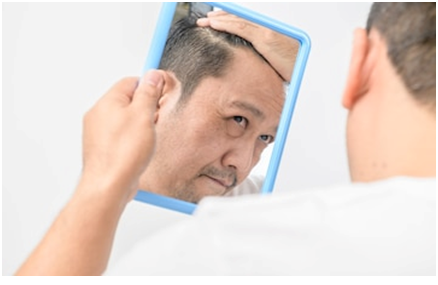 The choice between a traditional hair transplant and hairline lowering depends on individual needs and preferences. A hair transplant is a versatile procedure that can address various areas of hair loss on the scalp. It is suitable for individuals with receding hairlines, thinning hair, or bald patches in other areas.
The choice between a traditional hair transplant and hairline lowering depends on individual needs and preferences. A hair transplant is a versatile procedure that can address various areas of hair loss on the scalp. It is suitable for individuals with receding hairlines, thinning hair, or bald patches in other areas.
On the other hand, hairline lowering, also known as hair transplant for forehead reduction, is specifically designed to address the forehead’s appearance, making it the preferred option for individuals seeking to reduce their hairline. It is a more targeted approach, providing a permanent solution to create a lower, more aesthetically pleasing hairline. This makes hairline lowering the preferred choice for individuals who want to achieve a balanced facial appearance by lowering their hairline and framing their face better.
Consulting with an experienced hair transplant doctor in Mysore, such as Dr Manas SN, will help you make the best decision for your unique situation.
How to Prepare for a Hairline Transplant?
Preparing for a hairline transplant, commonly known as a big forehead hair transplant, is crucial to ensure a smooth and successful procedure. Before the hair transplant, your doctor will provide specific instructions to help you prepare adequately.
Here are some essential steps to follow:
1. Medications and Supplements: Avoid taking blood-thinning medications, aspirin, and herbal supplements for at least two weeks before the procedure. They can increase the risk of bleeding during surgery. Following the doctor’s advice regarding any necessary medication adjustments is essential.
2. Smoking and Alcohol: Quit smoking and avoid alcohol for a few weeks before the surgery. It can impair healing and reduce the success of the transplant.
3. Healthy Diet: Maintain a balanced diet rich in vitamins and nutrients to promote overall hair health and aid recovery.
4. Hair Care: It is recommended to wash your hair thoroughly on the day of the procedure to ensure a clean scalp for surgery.
5. Arrangements: Plan for transportation to and from the clinic on the day of the surgery, as you may be unable to drive after the procedure.
What are the Risks of Hairline Lowering?
While hairline lowering is generally considered safe, like any surgical procedure, it carries some inherent risks. Common risks associated with hairline lowering may include:
1. Infection: There is a risk of infection at the surgical site. Proper wound care and antibiotics can help prevent infection.
2. Scarring: Scarring is a natural part of the healing process. However, using advanced techniques by skilled surgeons can help minimize visible scarring.
3. Numbness: Temporary numbness in the scalp or forehead area may occur after the procedure but usually resolves over time.
4. Bleeding: Some bleeding may occur during the surgery. But it is usually controlled during the procedure.
5. Unsatisfactory Results: Sometimes, the outcome may not meet the patient’s expectations. It is crucial to consult the surgeon to discuss realistic goals and expectations.
Choosing an experienced hair transplant specialist and carefully following post-operative care instructions can reduce these risks and ensure a successful hairline-lowering procedure.
Post-Operative Care to Follow
Post-operative care is essential for a successful hairline-lowering procedure. Here are some key guidelines to follow:
1. Take prescribed medications as directed to prevent infection.
2. Keep the scalp clean and dry during the initial healing period.
3. Avoid scratching or picking at the grafts to prevent complications.
4. Avoid strenuous activities, heavy lifting, and exercise for a few weeks.
5. Sleep with your head elevated for the first few nights after the surgery to reduce swelling and improve blood circulation to the scalp.
6. Refrain from smoking and alcohol consumption during the recovery period.
7. Attend follow-up appointments with your hair transplant specialist to monitor the healing progress and address concerns.
Outlook
A hair transplant to lower hairline is a safe and effective way to enhance your appearance and boost your confidence. By choosing the best hair transplant in Mysore with Dr Manas S N, you can be assured of outstanding results that will leave you looking and feeling your best. Don’t let a high hairline hold you back – take the first step towards a more youthful and balanced look today!
FAQs
How painful is a hairline transplant?
Hairline transplant procedures are typically performed under local anesthesia, minimizing discomfort during the surgery. Some patients may experience mild soreness or discomfort after the procedure. Patients must take the prescribed medication to manage the pain.
Is hairline lowering permanent?
Yes, hairline lowering is a permanent solution. The transplanted hair follicles taken from the donor site are genetically resistant to hair loss, ensuring a lasting and natural result.
Does hairline lowering cause hair loss?
No, hairline lowering does not cause hair loss. On the contrary, it helps to restore hair to areas where it has receded or thinned, providing a fuller and more natural hairline.
Is hairline lowering risky?
Hairline lowering is generally considered a safe procedure with minimal risks when performed by a well-trained and experienced hair transplant doctor.
How long does a hairline transplant last?
A hairline transplant provides long-term results. The transplanted hair follicles retain their natural characteristics, ensuring a lasting and youthful hairline for years.




